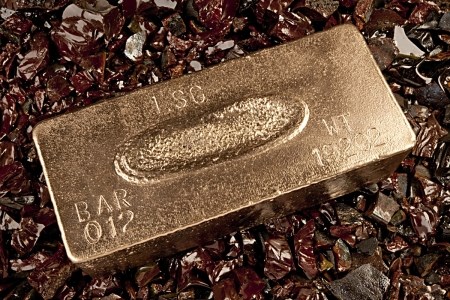As gold continues to break records and bring prosperity to the North with ever-soaring prices, the precious-metal heavyweight once again stands as the region’s celebrity commodity.
Predictions of $1,400-an-ounce gold, which seemed overly ambitious to some early in the year, came to pass in early November as the metal rallied some $250 per ounce since January.
This record figure may even be surpassed to hit $1,500, says Scotiabank’s vice-president of economics Patricia Mohr, something that would have seemed unthinkable just one year ago.
Mohr attributes the ongoing strength of the dollar to the persistent and pervasive weakness of the US dollar, which was further compounded in early November by various moves taken by the US Federal Reserve to stimulate spending. On the other side of the world, the European debt crisis that emerged through the spring also called into question the integrity of the Euro.
With the world’s two key reserve currencies coming under pressure, investors have turned in record numbers to precious metals, particularly gold and silver.
“This is really an investment story in that jewelry demand probably is not particularly strong, so the physical demand for things like that is not what’s driving this,” says Mohr. “What’s driving it is the interest by investors in an alternative to paper currencies.”
This record performance in gold is a far cry from 2002, when the Discover Abitibi geoscience mapping initiative began in Timmins under the auspices of the Timmins Economic Development Corporation. With the price of gold sitting at $278 an ounce, manager Bob Calhoun said something needed to be done to attract exploration companies to start looking in northeastern Ontario.
Now, more than 90 exploration companies are toiling away in the area, drawn to the area in large part to its status as a historically prodigious producer.
“If you’re going to look for something, you look where somebody else has already looked,” says Calhoun. “The old saying is that if you’re standing in the shadow of a headframe, you’re pretty close to an ore deposit, and that holds true. You look at Goldcorp and Lake Shore Gold and so forth with the rejuvenation of different mining properties in Timmins, such as the deepening of the shaft of Hoyle Pond, all these things are adding to the momentum we’re seeing in this area.”
Ambitious plans to establish new mining operations or expand existing ones by the likes of Brigus Gold and Northgate Minerals have lifted not only the levels of mineral exploration but also spending on related supplies and services.
Hotel space in the city is now a rarity, with the majority of rooms being booked up solid through the week. Driving into Timmins with the expectations of finding a place to stay when you get there is now a thing of the past, says Calhoun.
“The number of people that are in and out of here in a week is just amazing.”
As another tangible example of the impact, Timmins Mayor Tom Laughren points to Detour Gold, which has given a contract for 36 heavy haul truck to Caterpillar dealer Toromont Industries Limited.
Toromont is a “substantial player in Timmins,” says Laughren, and the deal will also generate 70 positions for mechanics to assemble the 350-ton vehicles and maintain them once production begins at Detour’s mine north of Cochrane.
Similar boom times can be seen in Kirkland Lake, which stands as an increasingly prominent hub for many of the northeast’s major mineral projects.
This includes two major efforts within city limits, including Kirkland Lake Gold’s Macassa Mine, which stands to hire hundreds in the coming months and years as it boosts production.
Also located in the camp is Queenston Mining, which recently raised $55 million to continue moving five fully owned properties toward production, with $20 million budgeted for exploration in 2011.
Such are the city’s fortunes that its infrastructure is being put to the test as miners and suppliers alike look to undertake massive hiring increases.
A housing study commissioned by the city through the summer found that 100 new homes will be needed every year for the next six years just to keep up with demand.
Mike Guimond, a Kirkland Lake realtor, told Northern Ontario Business in July that even as the price of gold sat around $1,200 an ounce, the demand for housing in the city was unprecedented, with the price of some homes jumping by 50 per cent.
“I’ve been doing this for 32 years, and while I’ve seen some good times for the housing market in Kirkland Lake, it’s never been as good as it is right now,” he said.




